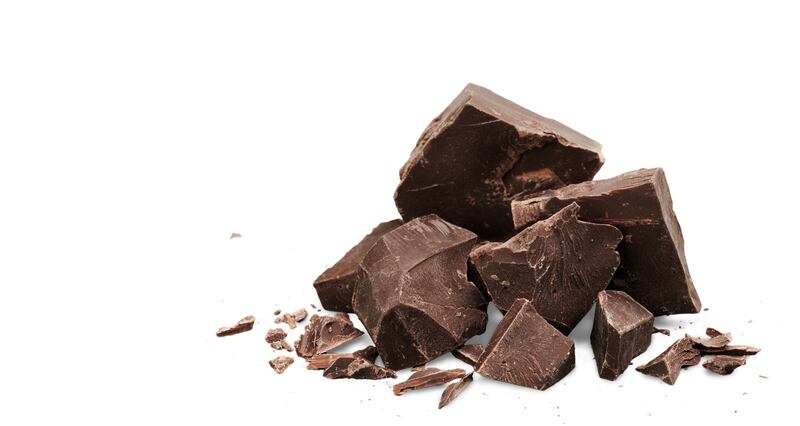Acne is the most common skin condition for adults in the United States, according to the American Academy of Dermatology. Approximately 50 million Americans struggle with acne each year.
Though acne is caused by a variety of factors such as hormone balance and skin type, diet can also play a role in maintaining healthy skin. Diets heavy with fast foods and refined carbs can irritate acne and increase risk of developing acne.
Let’s take a look at four foods thought to cause or irritate acne.
Can diet cause acne?
Diet will not typically cause acne, but certain foods can exacerbate acne and increase risk of developing acne. Changing your diet is not a guaranteed way to improve acne — it can be difficult to know which foods trigger acne breakouts. An elimination diet is a good way to find out which foods negatively impact your acne, per Harvard Health.
“Certain foods can promote inflammation throughout the body, and it’s possible this triggers acne outbreaks. In addition, diet can affect hormones that, in turn, could make acne worse,” reports Harvard Health.
1. Dairy products, especially skim milk
Studies have shown there is correlation between dairy products such as milk or ice cream and acne in young adults. Individuals who regularly consume dairy products are four times more likely to suffer from acne, a 2017 study reports.
Most research suggests that milk and dairy products do not cause acne, but can irritate acne, per Healthline. Dairy cows are given hormone treatments which can affect the cow’s milk supply — these hormones can cause your hormones to be off balance and trigger acne, according to research published in The Journal of Clinical and Aesthetic Dermatology.
Skim milk might be the worst dairy product for maintaining clear skin.
“Skim milk can make acne worse,” Bobby Buka, New York dermatologist and CEO of The Dermatology Specialists, told Byrdie. “It contains bovine growth hormones that are fat-dissolvable. Since there’s no fat in skim milk, they don’t dissolve. Those hormones, left in the body, can result in acne.”
2. Chocolate
Chocolate has been linked to acne and pimples, a 2016 study found. Participants were asked to consume either a chocolate bar or jelly beans. Those who ate the chocolate experienced an increased number of pimples.
“We found that, on average, people had about five more pimples with the ingestion of chocolate,” said study author Dr. Gregory R. Delost of the Department of Dermatology at University Hospitals, Cleveland Medical Center, per CNN. “Some people might say, five pimples, no big deal, but if someone is getting ready for their high school dance … then five pimples is definitely clinically relevant in that situation.”
Another study suggests that chocolate may increase the severity and frequency of acne because it causes the body to react more intensely to the bacterias which causes acne.
In a 2014 study, researchers gave men between 18 and 35 capsules of 100% cocoa powder or a placebo at random. The men who consumed the cocoa power capsules had significantly more acne lesions than those who took the placebo.
“Everybody has their own triggers. If chocolate breaks you out, stop eating it,” said Dr. Patricia Farris, a dermatologist and fellow of the American Academy of Dermatology, per CNN. “It’s simple. If you experience acne outbreaks after eating even moderate amounts of dark chocolate, unfortunately, limit or stop eating chocolate.”
3. Fast food
Frequently consuming fast foods can result in poor skin. Popular fast-food menu items such as hamburgers, fries, milkshakes, soda, chicken nuggets and hot dogs could be acne-causing culprits, per Healthline.
“Fast food is generally very processed and higher in refined carbohydrates, which means the sugar content is higher and the nutritional value is lower,” per Byrdie. “Refined carbs cause a spike in blood sugar and insulin, which causes inflammation and increased sebum production, which can lead to acne.”
A study from 2010 observed over 5,000 teenagers and young adults in northeast China; researchers found that high fat diets were linked to a 43% higher risk of developing acne. Frequently consuming fried foods increased risk of acne by 17%.
4. Refined carbs and sugars
People who suffer from acne typically consume significantly more refined carbs than those who do not have acne, research shows.
Refined carbs include foods such as white bread, candy, breakfast cereal, white rice, pizza and pastries, per Medical News Today. Refined carbs provide little to no nutritional value or lasting energy. They are processed by the body rapidly and cause blood sugar to spike.
“You’re more likely to have acne if your diet is full of foods and drinks like soda, white bread, white rice, and cake. The sugar and carbohydrates in these foods tend to get into your blood really quickly. That means they are high on the glycemic index, a measure of how foods affect blood sugar,” reports WebMD.
“When your body makes more insulin to bring down blood sugar, it affects other hormones that can boost oil production in your skin.”
A 2020 study found that people with high fat and refined sugar diets have a 54% higher risk of getting acne. Frequently drinking sugary beverages, like soda or energy drinks, is associated with an 18% higher risk of acne.


